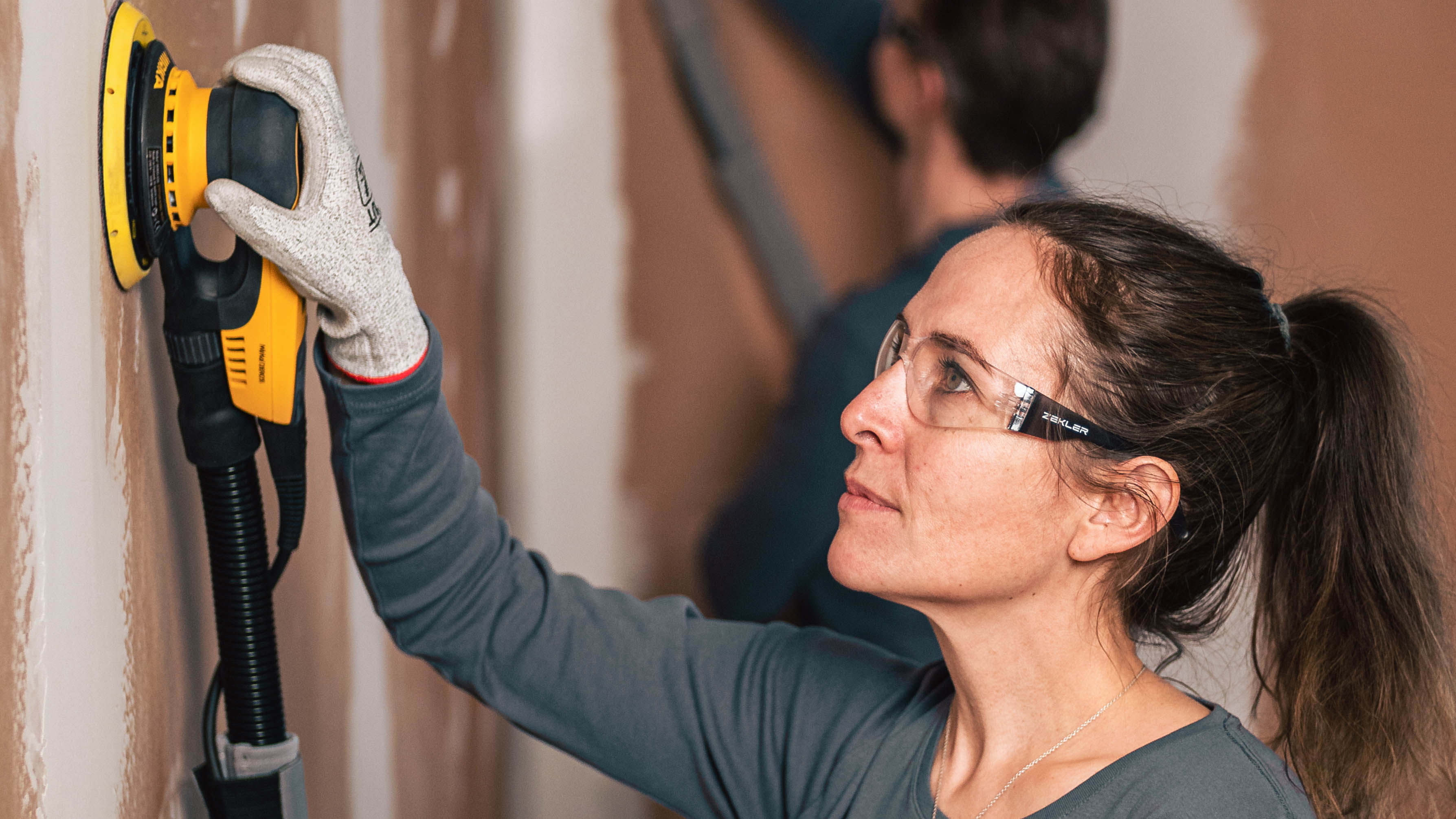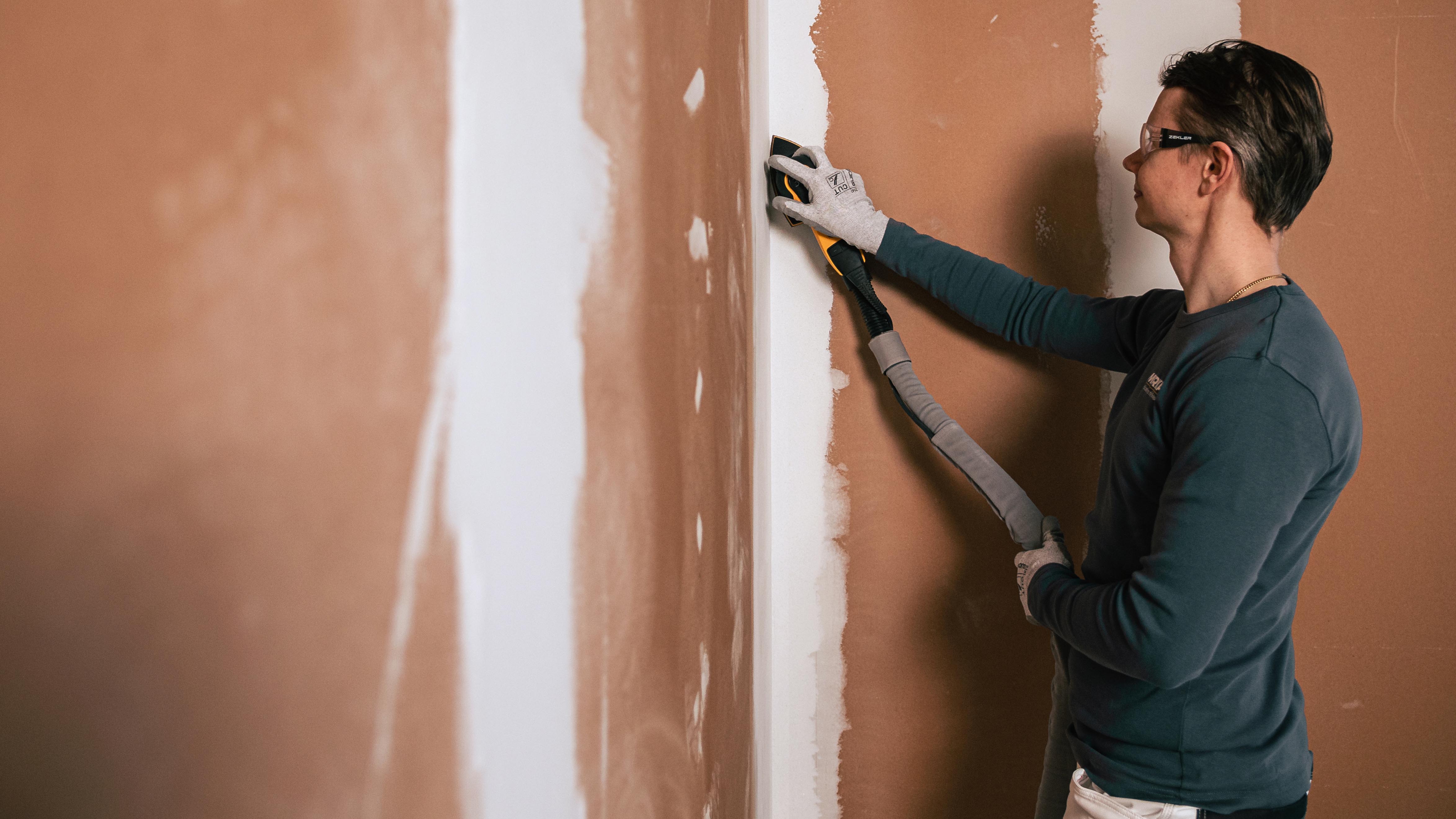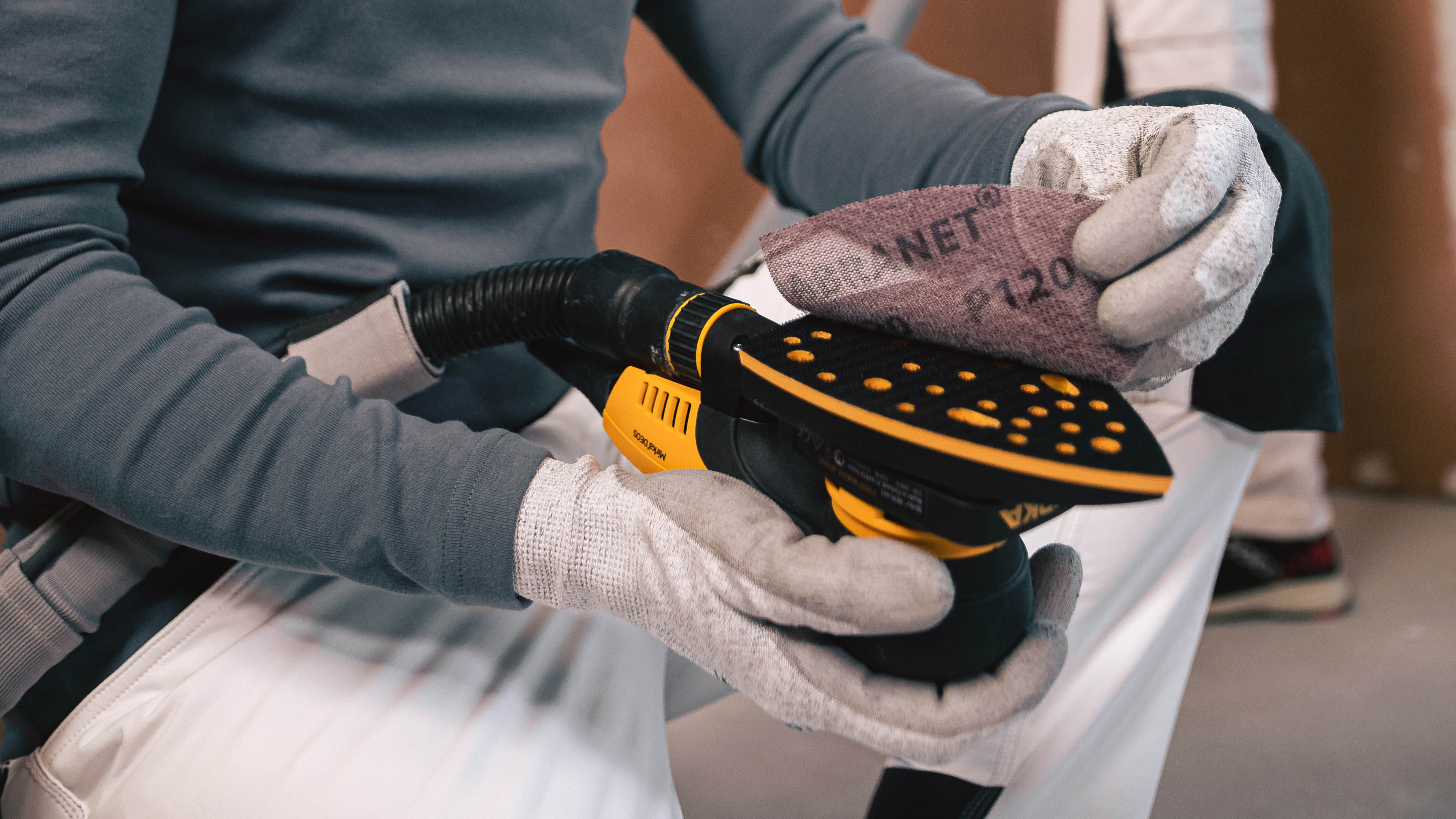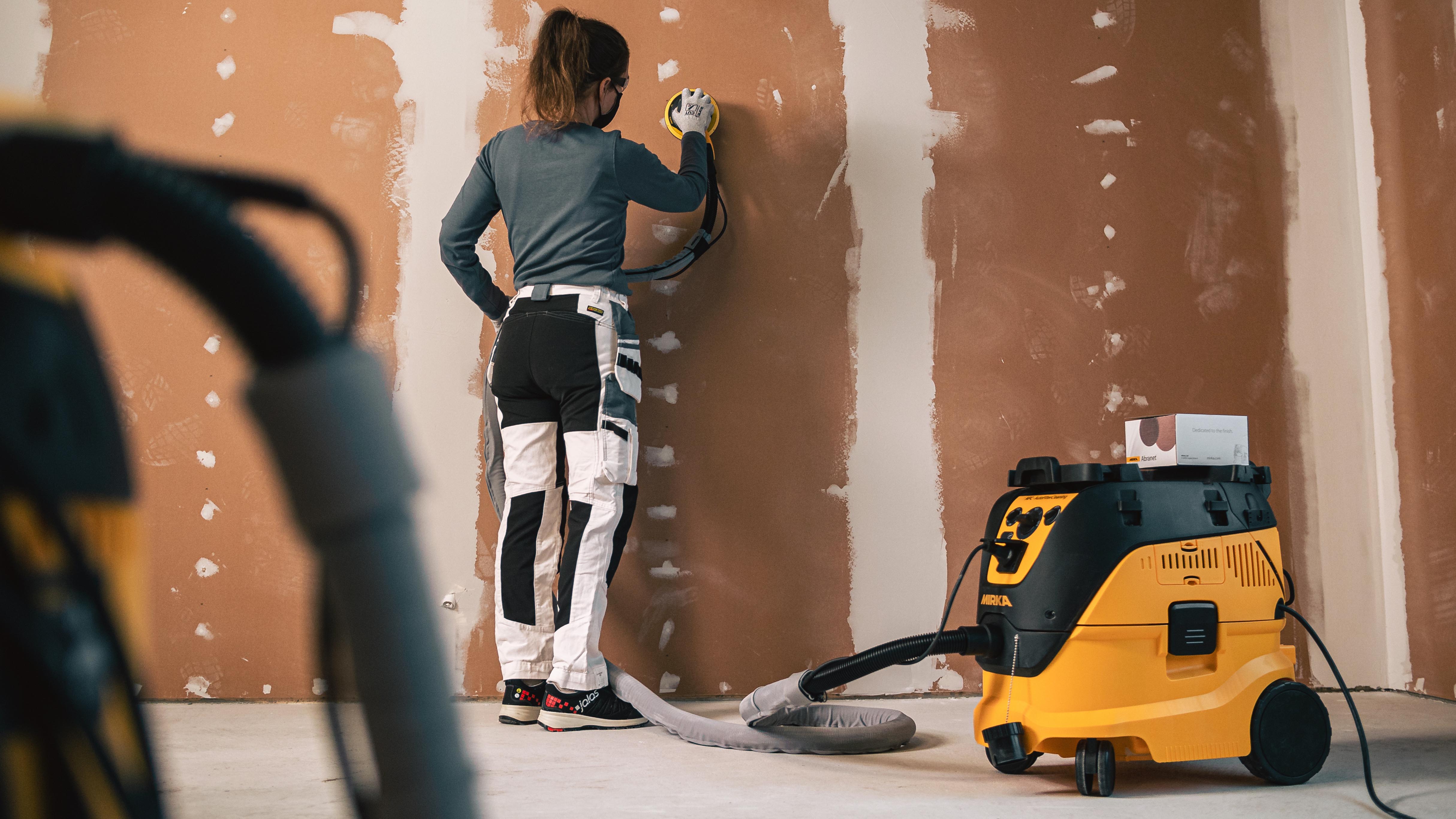2+1 years
Register Your Tool
All Mirka power tools have a standard two-year warranty. Get an additional 1 year of warranty free of charge by registering your tool within 30 days of purchase.
Keep your tools in excellent shape on myMirka where you can register, manage and order repair for your tools.
Replenish your stock, access marketing materials, view sales guides and read about upcoming product launches.
When you want to protect your health and move to the next project faster, Mirka dustless drywall sanding solutions are the answer.
The right solution for every project
For sanding partial walls, the Mirka® DEROS orbital sander is your perfect choice. For larger surfaces and ceilings, we would recommend the Mirka LEROS 950CV drywall sander- and if you want to reach closer, Mirka® LEROS-S 950CV is a shorter version of the iconic LEROS, a perfect machine for smaller rooms. For corners and edges the Mirka® DEOS 3x4 or the Mirka® DEOS 3x5 sanders, as well as the Mirka® DEOS Delta can help you reach even the most difficult spots. In addition, Mirka Handy hand sanding kit is a useful and ergonomic choice when there is no electricity available.
Net plus
Mirka offers a wide range of effective abrasives for different applications. When sanding putty on walls, we recommend choosing the Mirka Abranet® range of products. The ground-breaking Abranet abrasive is fully formed out of mesh, meaning the entire surface area can be used for dust extraction. Abranet is available in different grits and strengths. For hand sanding, Mirka Gold Proflex is a flexible and efficient sandpaper that works perfectly on paint, wood and fillers.
Dust removal
Dust removal is essential when you want to gain a perfect wall sanding result without the mess. And what about the ceiling! When using a hose to combine the efficient sanding tool with a dust extractor, the dust created from sanding can be removed by 99.7%. Dust is placed in the dust bag of the vacuum cleaner instead of remaining in the air and your surroundings. Don’t forget, we recommend using a mask and other protective gear when sanding.
Take care of your health
When you want to perform better and as efficiently as possible, but don't want to inhale dust, Mirka's three-step dust-free solutions are your best friend. When the dust is directed to a dust bag, it doesn't enter your or your customer's lungs.
Decorative Painter, France
Having the right tools for the right sanding application is crucial if you want to exceed expectations in the finish, whether you work on something new or doing renovation work. For Alexandre Lardy, plasterer and decorative painter from France, choosing a dust-free solution from Mirka was an easy choice.
"One thing I’ve really liked and that struck me immediately is the dust extraction aspect.
I have the impression that I’m not sanding at all, so effective is the extraction – I get absolutely no dust."
It's not only great for myself, it's also great for my customers.
Paint Pot Ladies
Mirka's dust-free solutions
Tired of feeling like a snowman when the working day is over? Try Mirka’s dust-free sanding solutions and save both time and money! Sarah from Paint Pot Ladies told us what dust-free sanding means to her.
Abrasives made for dust-free sanding
Mirka, the Dust-Free Pioneers, started the transformation to better sanding over 20-years-ago with Abranet abrasives, still the leading net abrasive on the market.
Find the right Net abrasive for your tools
Surface prep is the starting point for any refinishing job that looks clean and lasts. If you skip it, your paint won’t stick well, flaws will stay visible, and the results won’t hold up over time. As a DIYer, taking time to sand properly helps you avoid common issues and gives your work a more professional finish.
What Happens Without Proper Prep
Why Sanding Improves Results
Where It’s Most Important
When you put in the prep work with the right sanding tools, your final coat looks cleaner and lasts longer. You get a smoother finish and save time fixing mistakes later.
An electric random orbital sander is a go-to tool for smooth, swirl-free surface prep. It combines spinning and orbiting motions to remove material evenly and reduce visible marks.
For DIYers working on walls, doors, wood trim, or furniture, this sander saves time and improves finish quality. It works well on both flat and slightly curved surfaces.
Use it for:
Key benefits:
This tool helps you get a professional-quality surface with less effort and better consistency.
If you want a pro-level sander with great control, the Mirka® DEROS is a solid option. It runs with low vibration, supports dust-free sanding, and connects to the myMirka® app to track tool performance and safety in real time.
An electric corner sander is built for detail work. It's a square or rectangular sanding pad that fits into corners and along edges where larger sanders can't reach.
DIYers often struggle with baseboards, window frames, and stairs. This tool makes those jobs easier by sanding tight areas quickly and cleanly.
Use it for:
Key benefits:
Instead of hand-sanding tricky areas, this tool speeds things up while still delivering clean results.
If you want more control while sanding edges and corners, the Mirka® DEOS is worth considering. Its compact shape and low-profile design help you get clean, smooth results in hard-to-reach spots without slowing down the job.
A random orbital wall sander is ideal for larger surfaces like walls and ceilings. Its head flexes to stay flat against the surface while sanding evenly with less physical strain.
For DIYers handling drywall prep, this tool makes sanding mud seams, patches, or old paint fast and consistent.
Use it for:
Key benefits:
Using this tool improves finish quality and reduces fatigue, especially in multi-room or ceiling-height work.
You can consider using the Mirka® LEROS wall sander. Its flexible head, lightweight body, and dust-free design make large surface sanding easier and more comfortable, even during long DIY projects.
A short orbital wall sander is designed for tight or confined interior spaces. It combines orbital motion with a compact design, making it ideal for closets, small rooms, and hard-to-reach wall sections.
For DIYers prepping drywall or repainting enclosed areas, this tool helps maintain consistent results without switching to manual sanding.
Use it for:
Key benefits:
This tool brings professional-level surface prep to spaces where larger tools fall short.
For sanding in tighter spots with wide coverage, the Mirka® LEROS-S is a good fit. Its shorter body and flexible sanding head help you reach narrow areas while still delivering consistent results.
A dust extractor connects directly to sanding tools to collect fine dust as you work. It helps maintain a cleaner space and protects your health by reducing airborne particles.
DIYers sanding indoors benefit from reduced cleanup time, better visibility, and improved air quality. Using a dust extractor also helps save several hours or even days of cleanup time, especially on large or multi-room projects.
Use it for:
Key benefits:
Adding a dust extractor makes sanding faster, cleaner, and safer, especially for indoor refinishing tasks.
You can also try a Mirka® Dust Extractor. It helps you keep dust under control, supports cleaner sanding, and runs steadily throughout longer tasks without slowing down.
A delta sander is built for detail work in corners, trim, and edges. Its triangle-shaped pad fits into spaces where round sanders can’t reach.
DIYers working on baseboards, stairs, or window trim use this tool to prep areas that need precision without hand sanding.
Use it for:
Key benefits:
This tool simplifies one of the trickiest parts of surface prep: clean sanding in detailed or confined areas.
If you want more control while sanding detailed spots, the Mirka® DEOS Delta is worth a look. Its compact shape and built-in dust control make it easier to get clean, smooth results in tight corners.
Smart app-enabled sanding tools connect via Bluetooth to track real-time performance data. DIYers can monitor vibration levels, tool usage, and service alerts for safer and more efficient work.
These tools help improve sanding habits, protect against overexposure to vibration, and keep equipment running smoothly.
Use it for:
Key benefits:
These smart tools combine sanding power with helpful tech features that support better project planning and safer work practices.
If you want more insight into how your tools are performing, connected options like Mirka® LEROS and DEROS combine smart app tracking with advanced sanding control. They help you work more efficiently and stay safer by monitoring vibration and usage in real time.
Power sanders help you work faster, but they need careful handling. They produce dust, vibration, and fast-moving parts. Following a few safety steps keeps your project smooth and protects your health.
Wear Protective Gear
Keep the Work Area Clean
Use the Tool Correctly
Watch Vibration and Fatigue
Check the Tool Before Use
As a DIYer aiming for professional results, the right sanding tools give you a real advantage. They help you prepare surfaces faster, reach tight spots, and keep your workspace cleaner. Each tool in this list supports better finish quality with less effort.
Whether you are prepping drywall, stairs, or trim, these tools help you work with more control and confidence. When surface prep is done right, your final result lasts longer and looks more refined.
Have questions or want more information?
Please contact us and we will be in touch.



